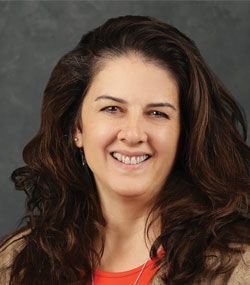
Soon after Duane and I started our farming career, we had a great opportunity to take a financial class that was organized through our church. The two gentlemen leading the class were dairy farmers who were successful in their farms, industry endeavors, and their outside investments.
Ben and Glenn both had a keen and aggressive breeding philosophy for their dairy farms and made wise investments in their early years of farming. They were a good pair to lead and mentor a class about managing finances, as their experiences and livelihoods proved their abilities.
It was a gift to sit around the circle and hear tips from both a faith and a farming perspective. Although the classes were not farm related in nature, dairy farming came into the conversation more times than not.
Duane and I both signed up for the class, but with little children at home, one of us needed to stay back and get them tucked into bed rather than provide entertainment to the whole group. I do not remember the details on why Duane stayed home and I attended the meetings. Maybe it was because my role with office work prioritized the need to better understand managing finances, and partly it could have been because I was home with the children most of the day.
Ben and Glenn were a perfect pair to oversee the conversation around finances, and they had several tips that have stayed with me over decades. One tip was that “debt is not to be feared, but rather, if managed properly, it can be a tool.” They talked about the right kind of debt and the wrong kind of debt; the kind that is needed to build equity versus the debt that will drain your account and you will pay for two or three times in interest.
This was timely for me because at that stage of my life, there was a lot of excitement, effort, and messaging around debt and how we should only make purchases with the amount that is our savings account. I am not condoning this way of life; it has been a lifesaving plan for many families. At the time, I had many friends who were living this out.
I knew, however, that our dream of purchasing a farm and investing in good cattle would not happen with the meager amount in our savings account. I struggled with the fact that debt was very much a part of our farm’s future.
If we were going to survive and thrive as planned, we needed to make wise purchasing decisions. This class helped me understand how debt plays a role in this process and that there was not anything wrong with using debt wisely.
Another key discussion was understanding the value of saving a small bit at a time. A retirement fund or a savings account can be started by adding a small amount of money month after month. Over decades of adding to the fund, one can have a valuable amount of money for spending.
Discipline is the key to keeping that account growing and intact until the right time. Bob and Glenn shared examples of saving as much as $50 a week or as little as $5 a week and what that adds up to after several decades of saving. It is important to keep your eyes on the totality rather than the small amount going into the account.
There is a cow in our barn right now that is living that example out, investing not dollars but milk, one pound at a time. Over the cow’s lifetime, she has put more than 300,000 pounds of milk into our tank. It really hit me when Duane told me how much this cow has milked in her lifetime and how many tankers that equates to. This cow has shipped nearly six tanker loads of milk to the plant herself.
All that milk at one time sounds mountainous, but to this cow, it is a job that was accomplished one drop at a time. Aside from the milk, this animal has also given us daughters that hopefully continue her legacy. Longevity is incredibly valuable to our bottom line and this cow’s ability to give back to us in this significance is a gift.
Other tips that were presented by Ben and Glenn focused on business investments. Every year, Duane and I try to set time aside to talk through our necessary farm investments. Some years it is easier to plan and invest, but there are also years that the investment plan is tabled until the industry is stronger.
With a dairy farm, our investments revolve around the cows. Making the right kind of cattle purchases, investing in cow comfort that gives back to the milk tank, and looking at investments that makes us more efficient are all directions that have caught our eye.
I have often been grateful for the time these two gentlemen put toward the financial class. I am sure they had no clue that the nuggets of information offered would be so impacting and long-lasting to a few young dairy farmers.
The author and her husband, Duane, own and operate a 550-cow dairy in Cochranville, Pa.









